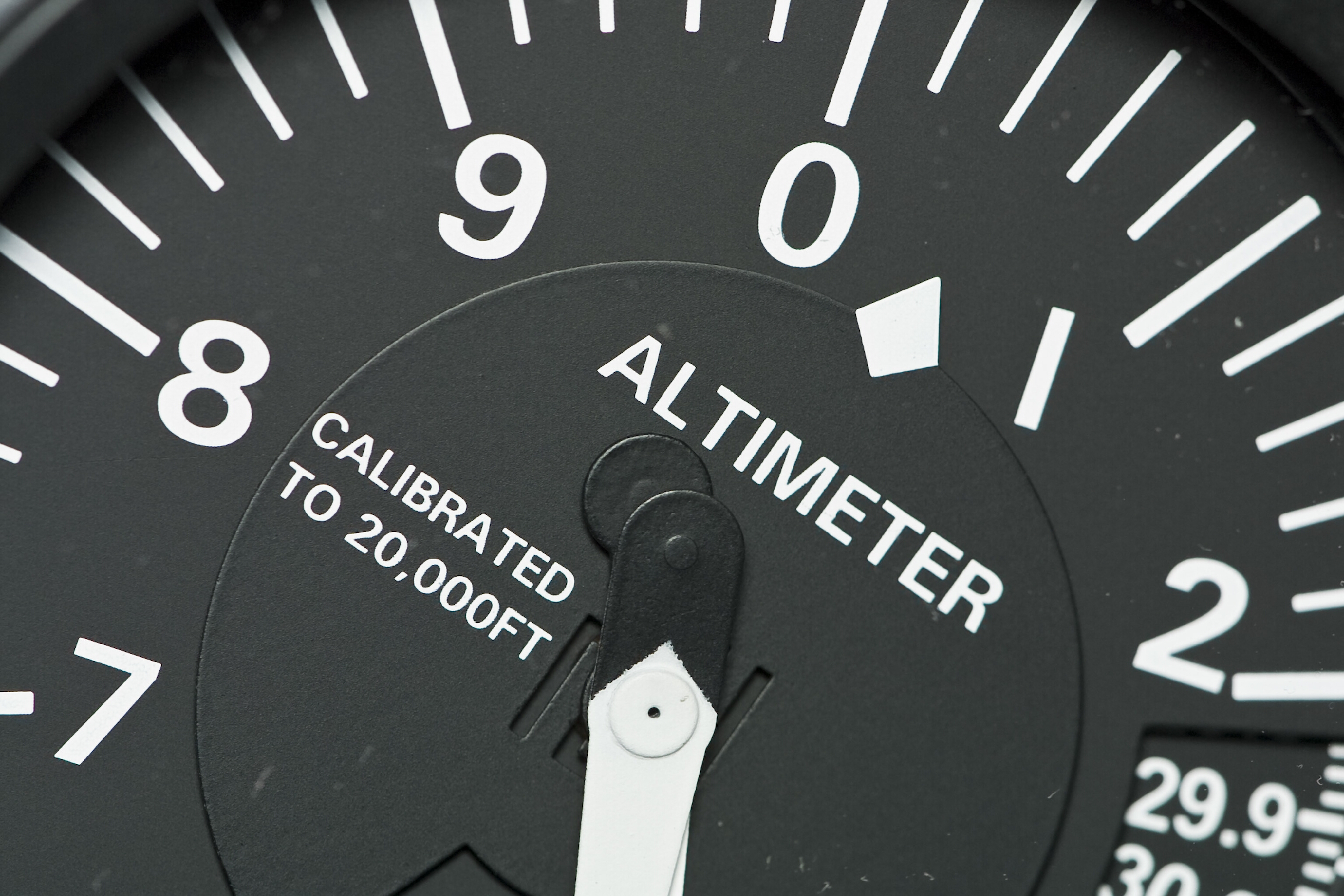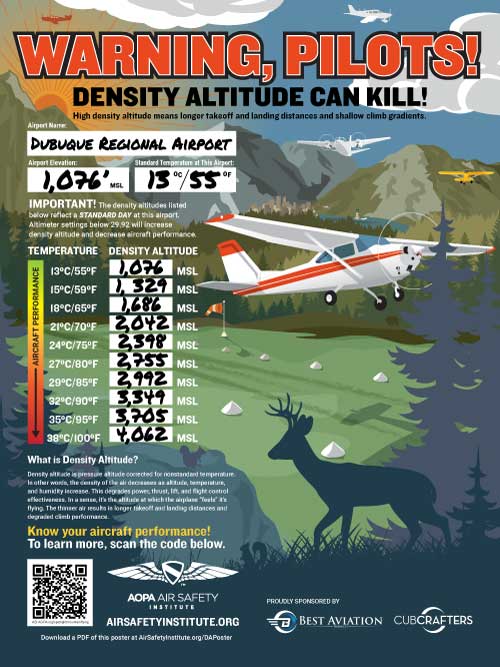Density Altitude

Table of Contents
Importance to Members
Overview
Technical Information
Additional Resources
Table of Contents
- What Is Density Altitude?
- How Will High Density Altitude Affect Me?
- Tips for Flying in High Density Altitude Areas
- Calculating Density Altitude
- Additional Resources
- From the AOPA Archives
Importance to Members
Throughout a pilot's flight training, there is instruction, and likely some experience of the detrimental effect high density altitude has on aircraft performance. But when the sky is blue and the summer sun is hot, even seasoned pilots can forget to carefully calculate takeoff, climb, cruise, and landing performance during preflight planning, sometimes resulting in accidents.
Density altitude is often not understood and its effects on flight can be unanticipated, resulting in takeoff and landing accidents. This subject report explains what density altitude is and briefly discusses how it affects flight. Further information, including the Air Safety Institute's free online interactive Mountain Flying course, is listed at the end of the report.
Please call AOPA’s Pilot Information Center with questions – 800-USA-AOPA (872-2672) Monday through Friday, 8:30 to 6:00 ET.
Overview
In order to protect ourselves from the effects of density altitude, we must first understand what it is and how it impacts flight. This subject report defines and discusses density altitude, includes the formula used in calculating density altitude and provides a list of flying tips for safer operations in high density altitude conditions.
What Is Density Altitude?
Density altitude is pressure altitude corrected for nonstandard temperature. As temperature and altitude increase, air density decreases. In a sense, it's the altitude at which the airplane "feels" its flying.
How Will High Density Altitude Affect Flight?
On a hot and humid day, the aircraft will accelerate more slowly down the runway, will need to move faster to attain the same lift, and will climb more slowly. The less dense the air, the less lift, the more lackluster the climb, and the longer the distance needed for takeoff and landing. Fewer air molecules in a given volume of air also result in reduced propeller efficiency and therefore reduced net thrust. All of these factors can lead to an accident if the poor performance has not been anticipated.
Technical Information
Tips for Flying in High Density Altitude Areas
- Fly in the evening or early in the morning when temperatures are lower.
- Call a local instructor at your destination airport to discuss density altitude procedures at that airport.
- Before flying to a high-elevation airport, know whether your aircraft climbs more efficiently with the first increment of flaps. Many aircraft do, but results vary and that first notch of flaps may add more drag than lift.
- Be sure the aircraft's weight is below 90 percent of maximum gross weight.
- Don't fill the tanks to the top (see previous tip).
- Fly shorter legs and make extra fuel stops (tough suggestion to accept, but it results in less exciting takeoffs).
- Be ready to ferry one passenger to an airport with a lower density altitude, then come back for the other. If you are unsure of conditions, fly around the pattern once alone without baggage to test your aircraft's performance.
- Have 80 percent of your takeoff speed at the runway's halfway point, or abort. That means having 48 knots IAS in a Cessna 172 at the halfway point.
Calculating Density Altitude
Density altitude in feet = pressure altitude in feet + (120 x (OAT - ISA temperature))
 Pressure altitude is determined by setting the altimeter to 29.92 and reading the altitude indicated on the altimeter.
Pressure altitude is determined by setting the altimeter to 29.92 and reading the altitude indicated on the altimeter. - OAT stands for outside air temperature (in degrees Celsius).
- ISA stands for standard temperature (in degrees Celsius).
Keep in mind the standard temperature is 15 degrees C but only at sea level. It decreases about 2 degrees C (or 3.5 degrees F) per 1,000 feet of altitude above sea level. The standard temperature at 7,000 feet msl, therefore, is only 1 degree C (or 34 degrees F).
For example, the density altitude at an airport 7000 feet above sea level, with a temperature of 18 degrees Celsius and a pressure altitude of 7000 (assuming standard pressure) would be calculated as follows.
- 18 – 1 = 17
- 17 x 120 = 2040
- 2040 + 7000 = 9040 feet Density Altitude
This means the aircraft will perform as if it were at 9,040 feet.
Additional Resources
Mountain Flying Safety Spotlight
Air Safety Institute's online mountain flying resource with further explanation of density altitude
VFR into IMC Safety Center
Air Safety Institute's online weather resource featuring density altitude
Air Safety Institute Quiz on Density Altitude
Density altitude high? Know before you fly
July 2007
Flying Seasons: Density Altitude
It isn't just for mountains anymore
Proficient Pilot
Density-altitude discussions
